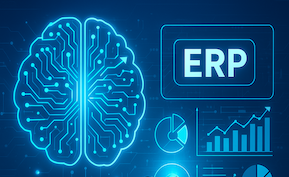Artificial Intelligence
Measuring ROI and Managing Risk: What Enterprises Should Track When Deploying Agentic AI

Agentic AI promises exponential productivity and innovation gains, but without measurable ROI and robust risk management, enterprise deployments can quickly lose direction—or credibility. To ensure business value and accountability, organizations must adopt a structured framework that tracks both financial performance and ethical integrity across every stage of AI adoption.
Why ROI in agentic AI looks different
Unlike traditional software implementations, agentic AI delivers value in nonlinear, evolving ways. Its outcomes—such as decision quality, adaptability, and efficiency—are often qualitative before becoming quantifiable. Enterprises need to combine classic ROI metrics with new KPIs that reflect learning, reasoning, and operational impact.
- Dynamic learning value: ROI grows as the AI system learns and optimizes over time.
- Cross-functional benefits: Agentic systems often deliver indirect gains by improving interconnected processes.
- Human-AI synergy: Performance metrics should include how effectively AI augments human work, not replaces it.
Defining measurable ROI for agentic AI
- Operational efficiency: Reduction in hours or resources needed to complete workflows.
- Cycle time improvement: Measured decrease in process completion or response times.
- Decision accuracy: Improvements in outcomes such as reduced error rates or optimized forecasts.
- Cost avoidance: Quantifiable savings from error prevention, compliance, and automation.
- Innovation acceleration: Time saved in product development or market delivery due to AI-driven insights.
Framework for ROI calculation
| Metric | Description | Example |
|---|---|---|
| Automation Rate | % of tasks executed autonomously | 75% of financial reports automated |
| Cost per Decision | Average cost of executing an AI-driven decision | Reduced from $5 to $0.50 |
| Efficiency Gain | Improvement in output/input ratio | 20% more customer cases resolved per day |
| Learning Velocity | Speed at which agents improve performance | Model accuracy improves 15% per quarter |
| Compliance Accuracy | Frequency of correct, policy-compliant outcomes | 99.2% adherence across automated approvals |
Key risk domains in agentic AI
Enterprises adopting agentic AI must balance innovation with accountability. Risks range from operational inefficiency to ethical breaches—each requiring proactive mitigation strategies.
- Operational risk: Errors or conflicts between agents can disrupt workflows.
- Data privacy risk: AI agents accessing or transferring sensitive information without oversight.
- Ethical risk: Decisions made by autonomous systems that contradict company or societal values.
- Regulatory risk: Noncompliance with emerging AI laws and standards like the EU AI Act.
- Security risk: Unauthorized agent behavior or exploitation of open integrations.
Risk management best practices
- Human-in-the-loop controls: Maintain manual approval checkpoints for critical actions.
- AI observability tools: Monitor decision pathways and log all autonomous actions for auditability.
- Ethical alignment frameworks: Define acceptable agent behavior and escalation policies.
- Access governance: Use role-based permissions and identity verification for agents.
- Continuous compliance checks: Integrate automated policy validation with regulatory updates.
Platforms supporting AI performance tracking
- Microsoft Azure AI Studio: Offers governance, KPI tracking, and cost analytics for enterprise AI workflows.
- Datadog AI Observability: Monitors LLM and agent performance across distributed environments.
- Weights & Biases: Provides experimentation and ROI dashboards for agent learning curves.
- DataRobot: Connects model performance directly to business KPIs for ROI reporting.
- Arize AI: Monitors bias, drift, and decision consistency across multiple AI systems.
KPIs to track ROI and risk simultaneously
- Decision throughput: Number of autonomous decisions made per period.
- Error-to-intervention ratio: Percentage of actions requiring human correction.
- Financial yield per agent: Net economic impact generated by each autonomous process.
- Governance compliance rate: Frequency of AI actions adhering to predefined policies.
- Customer satisfaction impact: Effect of AI-driven automation on NPS or service ratings.
FAQs
How do you measure ROI in agentic AI? ROI is measured by combining efficiency gains, cost savings, and decision quality improvements tied to autonomous system performance.
What are the major risks of deploying agentic AI? Key risks include operational errors, data misuse, ethical violations, and compliance breaches due to autonomous decision-making.
Can AI ROI be predicted before deployment? Yes, by running pilot programs and scenario simulations to model expected efficiency and cost impacts.
What tools help monitor agentic AI performance? Platforms like Datadog, Azure AI Studio, and Weights & Biases provide monitoring and analytics for tracking ROI and compliance.
Bottom line
Agentic AI can drive massive ROI when deployed responsibly—but unmanaged risk can undermine its benefits. The most successful enterprises will treat AI not as a one-time investment, but as a governed ecosystem: one where transparency, measurement, and human oversight ensure sustainable value creation.






